Europe
中文
English
Europe
Welcome to Damon Industry Website
As one of the core components of the roller conveyor, the conveying roller will be installed in various conveying equipment eventually. Different installation methods and their roles are often prone to be ignored. Today, let's talk about: The installation methods of the conveyor rollers.
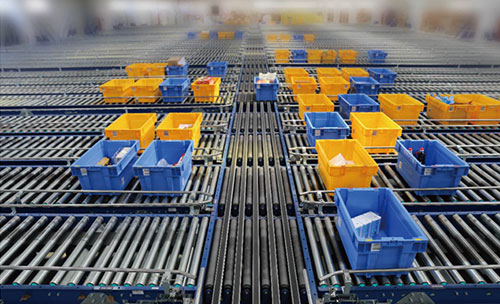

1. Basic concept
From the perspective of design, the installation method is divided into two types, i.e.: loose connection and fixed connections.
Loose connection: It can be understood that the roller core is placed inside the installation hole of the frame, and the roller is not rigidly integrated with the frame after installation. Spring press-in type, milling flat, and through-shaft pin hole belong to such connection form. It is simple in structure and convenient to install, but due to the mechanical structure of its freely supported beams, the bearing capacity is relatively lower.
Fixed connection: After installation, the roller core will be integrated with the frame, bringing it a higher structural strength, meaning that the rollers connected in this form will have a higher bearing capacity than those connected loosely. Internal thread and external thread are typical examples of fixed connection.
2. Which installation method is the most common?
Due to different frame types and other design considerations, the installation of conveyor rollers is numerous and complicated, but "spring press-in type" and "internal thread" are the two most common.
Wherein: Spring press-in type is mostly found in the non-power roller and the light load transmission roller, and its biggest characteristic is the rather convenient installation and disassembly;
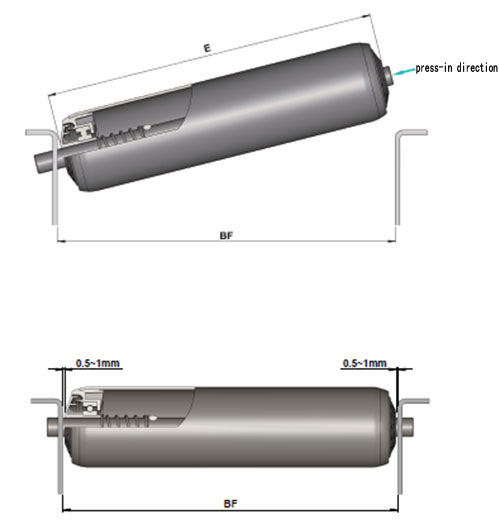
Internal thread: It is almost the "standard type" of medium and heavy load driving roller with the strong durability as the basis of its existence.
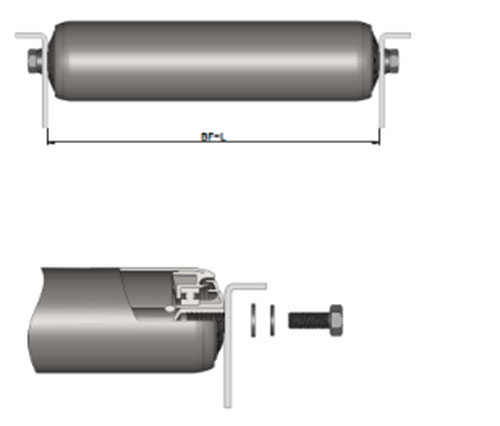
3. What shall we note about the installation hole size of the two installation methods i.e. spring press-in type and internal thread?
Spring press-in type: The installation hole shall be slightly larger than the diameter of the core. There are many factors that affect the size of the hole, which can be calculated in detail by the following formula:
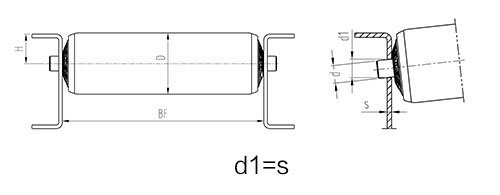
But in most cases (when the frame is not too thick, or the roller is not very "low"), we recommend: d1=d+0.5 mm.
Internal thread: The installation hole is used to enable bolts to get through. With the purpose of getting a higher flatness after roller installation, it is better to make smallest clearance. As our experience, it is recommended that d1 = nominal diameter of thread + (0.2 - 0.5) mm.
4. In addition, are there any other "second-line" installation methods and notes?
Milling flat: leader of second-line installation methods. The frame is provided with slots instead of holes and the roller will be put inside slots from top to bottom. If evaluated only from the convenience of installation, it is the fastest. But due to lack of upward restraint, it is mostly applied in belt conveyor rollers.
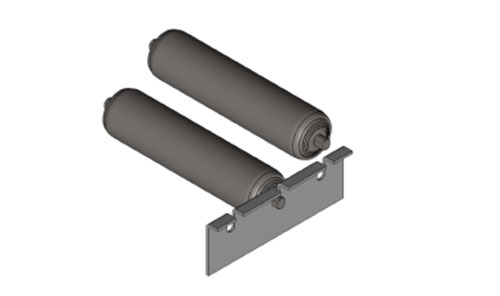
External thread: The difference from the internal thread is that it is locked and fixed by nuts instead of bolts. Note that it should be a single-ended double nut or similar forms for design, otherwise when the nut is locked, the frame will deform and additional axial pressure will be exerted on the roller after the nut is recessed inward, which will easily cause rotational blockage and even failure.
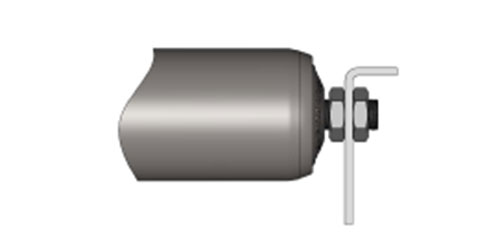
Among thousands of installation methods, only one is suitable. We hope that the content about the conveyor roller installation design and selection are conducive to your work. If you have further needs, please contact us: Zhejiang Damon Industry Co., Ltd.

